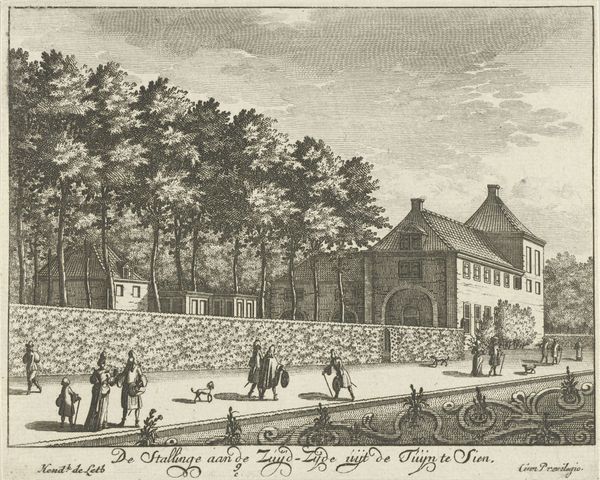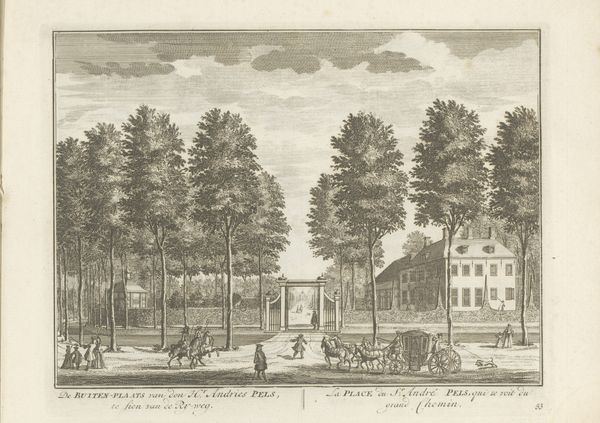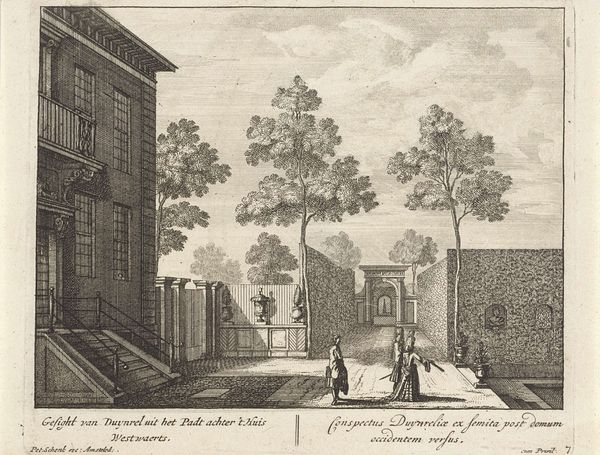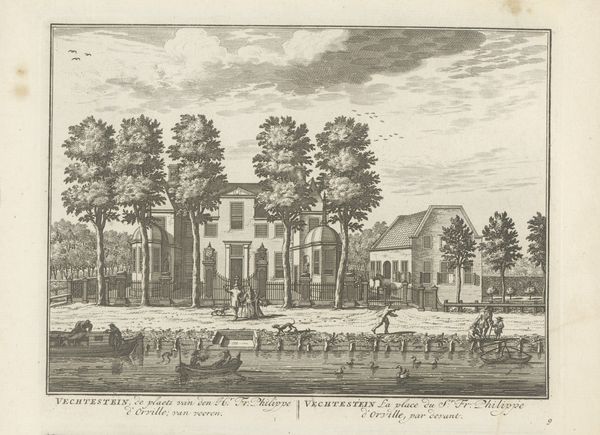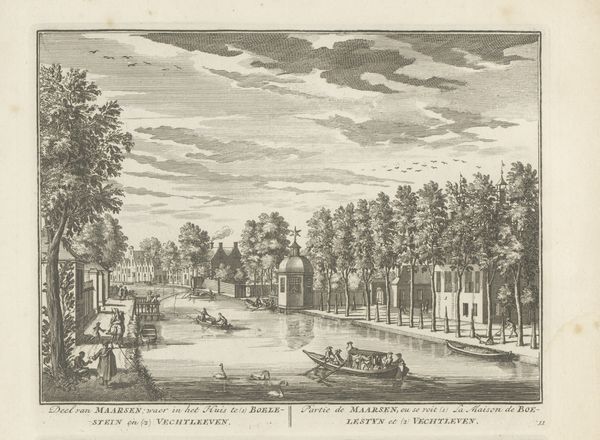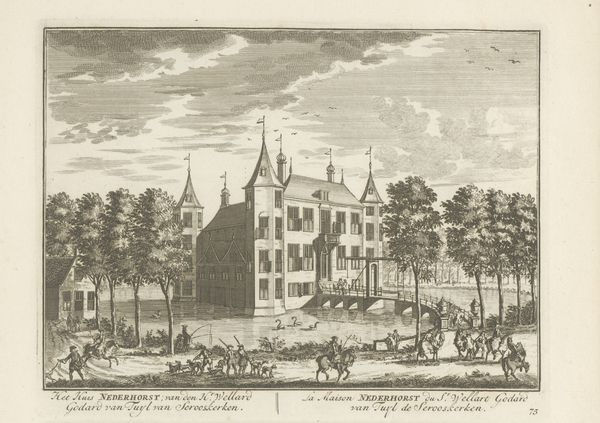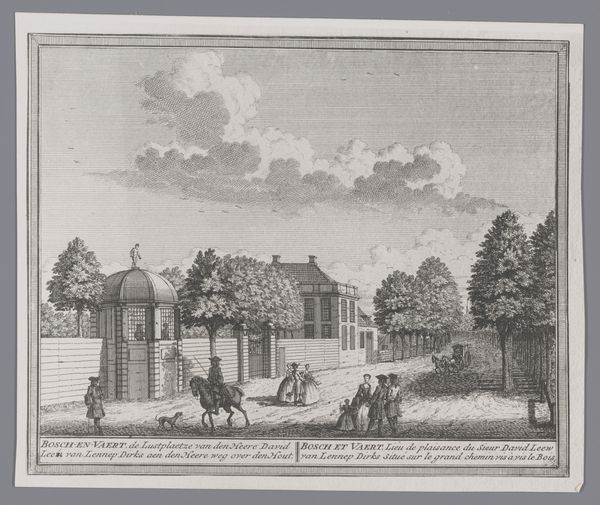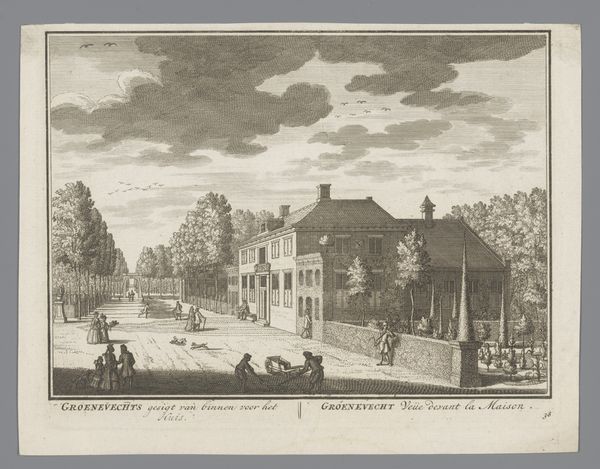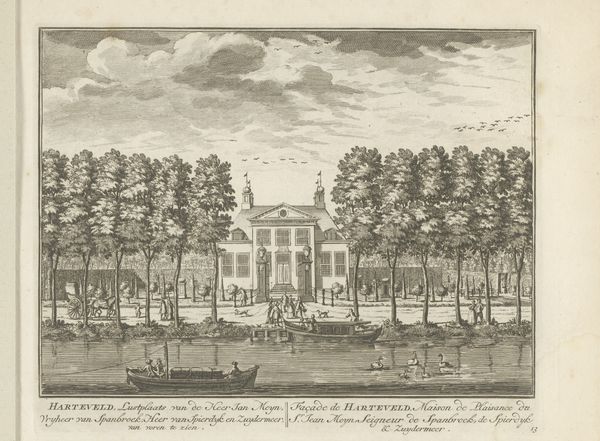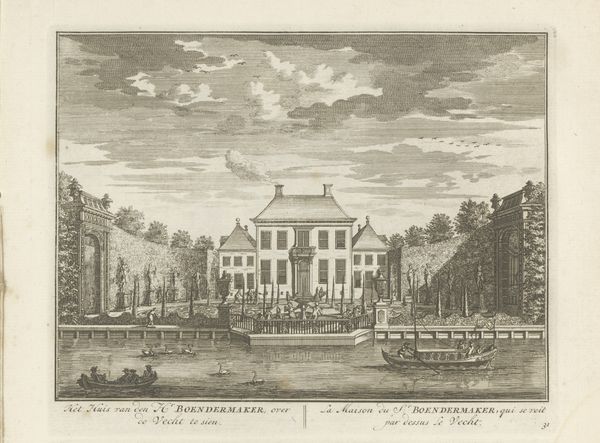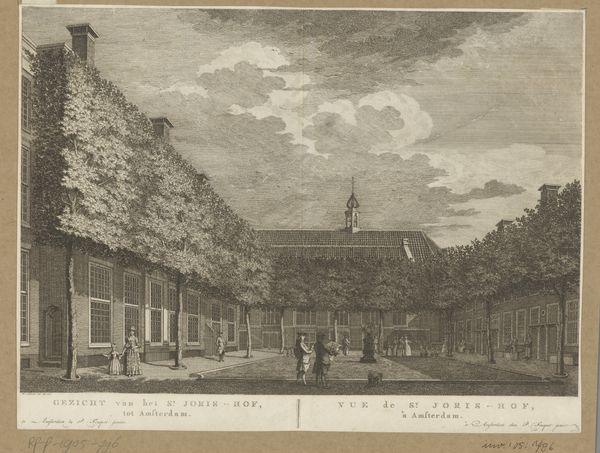
engraving, architecture
#
baroque
#
landscape
#
cityscape
#
engraving
#
architecture
Dimensions: height 130 mm, width 161 mm
Copyright: Rijks Museum: Open Domain
Editor: We’re looking at "Stallen aan de noordzijde van Paleis Soestdijk" – or "Stables on the North Side of Soestdijk Palace" – an engraving made sometime between 1725 and 1747 by Hendrik de Leth. It feels so serene, like a snapshot of a simpler time. What jumps out at you? Curator: Serene is a lovely word for it. For me, it’s about that interplay between the man-made and the natural world. See how the architecture is softened by the trees? There’s a real sense of curated nature, wouldn’t you say? Everything feels quite deliberate and, dare I say, picturesque? What do you make of the figures in the foreground? Editor: I noticed the people! It feels so candid, like we’re catching them mid-stroll. It's like a staged snapshot, but it could be just a really lucky shot of the landscape, or are they really staged? Curator: Staged to appear candid, perhaps. Think of it like Instagram filters for the 18th century! But jokes aside, these types of landscape prints were all the rage as a means for aristocrats to consume imagery that immortalized their legacy and achievements in shaping the Dutch countryside. Also notice how De Leth utilizes architectural elements such as line, form and space in the picture? What do you make of that? Editor: Oh, I see it now! The pillars really help frame everything. All of those choices and this being an engraving just elevate what might otherwise be a documentary work into something with greater depth. It’s more than just a record; it's an atmosphere. Curator: Exactly. De Leth wasn’t just showing us the stables; he was crafting an image, shaping how the viewer should perceive them – and the power behind them. Editor: So, more than just stables, it's like a statement! I never would've picked that up at first glance. Curator: That's the beauty of slowing down and looking, isn’t it? Always something new to discover.
Comments
No comments
Be the first to comment and join the conversation on the ultimate creative platform.
